Jayeon Chogalbi (자연초갈비)
6.7 Km 55 2021-03-23
14-1, Daehak-ro, Busanjin-gu, Busan
+82-51-891-7692
This is a place that sells handmade, extra-large ribs made from pork ribs aged in herbs. This Korean dishes restaurant is located in Busanjin-gu, Busan. The representative menu is grilled spareribs.
Dongnae Byeljang (동래별장)
6.8 Km 11873 2020-04-28
12, Geumgang-ro 123beon-gil, Dongnae-gu, Busan
+82-51-552-0157
Dongnae Byeljang in Busan is a villa with over a century of history. The villa boasts a large garden infused with Korean and Japanese styles, pine trees that are 200 to 300 years old, as well as a pagoda and a traditional-style house that are of cultural heritage value. Also, it has long been the cradle of song and dance heritage. Today, it is well known for its Korean restaurant, Song Hyang, that serves traditional royal cuisine. The combination of old charm with a unique dining experience makes Dongnae Byeljang a popular venue for various special events and family gatherings.
Sushimon (스시몬)
6.9 Km 54 2021-03-30
40, Samseongdae-gil, Dongnae-gu, Busan
+82-51-553-0303
It is a store where you can taste fresh seafood. This restaurant's signature menu is sliced raw tuna. This Japanese (cuisine) restaurant is located in Dongnae-gu, Busan.
Nokcheon Hotel [Korea Quality] / 녹천호텔 [한국관광 품질인증]
7.0 Km 158 2023-04-13
31, Geumganggongwon-ro 26beon-gil, Dongnae-gu, Busan
+82-51-553-1005~9
Busan’s Dongnae Hot Springs is an old and famous hot spring whose historic records trace back to Samguk Yusa, in the 13th Century CE. Its magnesium-rich 65℃ hot springs water is said to be highly effective toward the treatment of neuropathic pain, dermal disorders, and stomach disorders. Nokcheon Hotel’s history traces back to Nokcheonjang, a hot springs facility constructed in 1962 with Dongnae Hot Springs water. The hotel itself was constructed in 1980. All rooms in Nokcheon Hotel are furnished with large bathtubs, allowing visitors to enjoy their hot springs bath in private comfort. Interestingly enough, the bathrooms are furnished with buckets, stools, and other quintessential items of Korean public baths. The room interior tends toward simple elegance, with beige interior and wooden furniture. A variety of rooms are available, from Double and Twin rooms to Ondol (heated floor) Rooms and Family Rooms, accommodating from 2 to 8. The Family Room has two well-equipped baths, making it perfect for large families. The hotel is also home to a Korean restaurant specializing in freshwater clam soup and abalone rice porridge, a café, and a 24-hour convenience store. The lobby has a number of massage chairs for relaxation.
Dongnae is also famous for its delectable food. Eat Streets like the Gomjangeo Alley, Dongnae Green Onion Pancake Alley, and Sajik-dong Eat Street are great destinations for foodies, while Oncheoncheon Stream, Geumgang Park Cable Car, and the Site of Dongnaeeupseong Walled Town area also within easy reach.
Lotte Hotel Busan (롯데호텔 부산)
7.0 Km 20815 2021-01-14
772, Gaya-daero, Busanjin-gu, Busan
+82-51-810-1000
Lotte Hotel was built in 1973 to contribute to the tourism industry, modernization of Korea, and show the symbol Seoul’s development with its size and facilities. Expanding from there, there are now five hotel branches: Seoul, World, Ulsan, Jeju, and Busan Branch featuring the largest and highest premium hotel. Under the vision to become a global leading hotel, Lotte Hotel pushes for innovational changes that would ensure high quality services to their guests.
In addition to guestrooms, restaurant, and bar, Busan Lotte Hotel also has a Chrystal Ballroom equipped with a simultaneous interpretation system, a wedding hall, duty free shop, coffee shop, and other facilities suited for business and entertainment. Lotte Hotel Busan does their best to offer comfort and serve as an excellent business partner through continuous effort to improve in services and keeping facilities up-to-date.
Jeongdongjin Haemultang (정동진해물탕)
7.1 Km 69 2021-03-22
37, Seomyeonmunhwa-ro, Busanjin-gu, Busan
+82-51-809-8208
A store loved by locals in Busan where you can try spicy seafood dishes. This seafood restaurant is located in Busanjin-gu, Busan. The representative menu is spicy braised seafood.
Hotel Nongshim (호텔 농심)
7.1 Km 11348 2021-02-11
23, Geumganggongwon-ro 20beon-gil, Dongnae-gu, Busan
+82-51-550-2100
Hotel Nongshim is a tourist hotel located in Dongnae-gu Hot Spring District, Busan. The hotel was one of the first modern hotels to be built in the area and has received much attention from both domestic and international guests. After undergoing renovations in August 2002, Hotel Nongshim reopened as a 5-star tourist hotel with 240 guestrooms. Throughout its 50-year history, the hotel has had the privilege of welcoming many prominent guests and has even served as the designated hotel for members of the 2005 APEC summit. Through this opportunity, Hotel Nongshim was not only able to present itself as a hotel of excellent quality and scale once again, but also represent Korea's advancement in status and power within the global community.
At the hotel, guests can expect a number of luxurious amenities such as 100% natural hot spring water pumped to their guestrooms, a premium restaurant with a wide selection of dishes, and a pub where they can enjoy traditional German beer. Hurshimchung, the hotel's famed hot spring, is one of the largest hot springs in Asia.
Tourist sites and transportation facilities such as the Dongnae Country Club, Busan Country Club, Dongnaesanseong Fortress, Beomeosa Temple, Geumgang Park, Chungnyeolsa Temple, Geumjeongsan Mountain, Yangsan and Jeonggwan Express Bus Terminals, and Gimhae International Airport are located nearby, making Hotel Nongshim a favorite among both tourists and business travelers.
Termas Hurshimchung (허심청)
7.1 Km 109398 2021-05-18
Geumganggongwon-ro 20-beongil 23, Dongnae-gu, Busan.
Corea tiene una larga tradición de aguas termales y uno de los lugares más famosos en ese sentido es la Zona Termal de Dongnae. La leyenda cuenta que una grulla con una pata rota visitó los manantiales de agua caliente y al sumergirla allí, se curó por completo. La zona cuenta con una gran concentración de instalaciones de aguas termales. Algunos de los complejos más grandes son Nokcheontang, Cheonil Spa y las Termas Hurshimchung, que tiene una capacidad de 3.000 personas a la vez. La visita a un spa es ideal para los turistas que buscan descanso y relajación en su viaje por Busan. Después de recargar energías, puede visitar algún restaurante de la zona para probar la especialidad local: el pajeon de Dongnae, con una textura más suave que el pajeon habitual.
Wonjo Jobang Nakji (원조조방낙지)
7.1 Km 6285 2017-12-08
37, Myeongnyun-ro 94beon-gil, Dongnae-gu, Busan
+82-51-555-7763
Many years ago there was a restaurant (‘Jobang Nakji’) in front of the textile company Joseon-Bangjik (‘Jobang’) that was widely known for its tasty Nakji Bokkeum (spicy stir-fried baby octopus). Though the restaurant is now gone, Wonjo Jobang Nakji has recreated the original taste of the famous neighborhood restaurant and was even presented with the ‘‘Korean Traditional Cultural Preservation Award’ by the Korean Traditional Culture Preservation Committee.
Fortaleza Geumjeongsanseong (금정산성)
7.2 Km 2826 2021-03-31
Geumseong-dong, Geumjeong-gu, Busan
La fortaleza Geumjeongsanseong se ubica en la cima del monte Geumjeongsan (80,5 m.), en Busan. Su nombre original era Fortaleza Dongnaesanseong, pero cambió su nombre junto con el de la montaña.
Tiene una longitud de 17.377 metros y paredes que llegan a 1,5 a 3 metros de alto y es la fortaleza más grande de Corea. Actualmente solo queda una sección de 4 km de la original. No se han encontrado fechas exactas de su fundación o construcción, pero los estudios sobre su tamaño y ubicación indican que fue construida en la época de los Tres Reinos (cuando Goguryeo, Baekje y Silla luchaban para ampliar sus territorios).
La actual fortaleza fue construida en 1703 durante el reinado de Sukjong. Fue reconstruida después de la Guerra de Imjin (invasión japonesa de 1592 a 1598) como método de defensa de las posibles invasiones posteriores.
Originalmente, sus estructuras eran de piedra, pero fue restaurada en 1707 por los daños causados durante los oscuros años de dominio japonés. En 1971, fue designada como propiedad privada; los portales del oeste, este y sur fueron rearmados y aun está en el proceso de restauración. Sobre la fortaleza hay una torre de observación llamada Munnu. Hay otra torre llamada Mangnu para observar la llegada de los enemigos. A diferencia de otras, en esta montaña es fácil encontrar agua mineral, y debido a que es un área de granito, podrá encontrar cuevas de rocas y picos rocosos del monte Geumjeongsan.
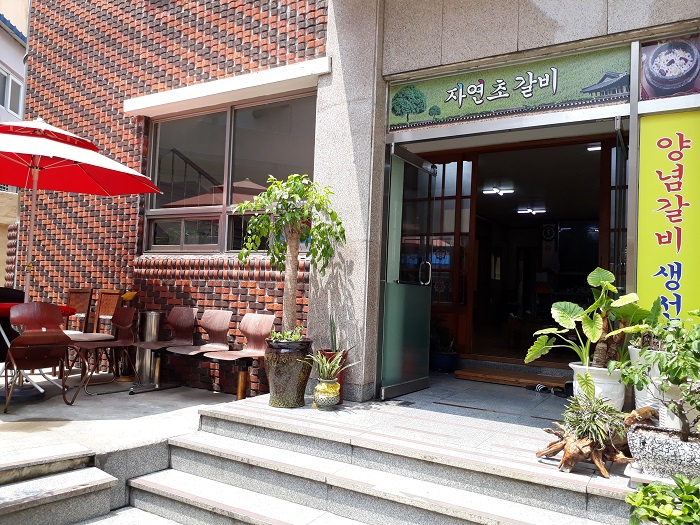
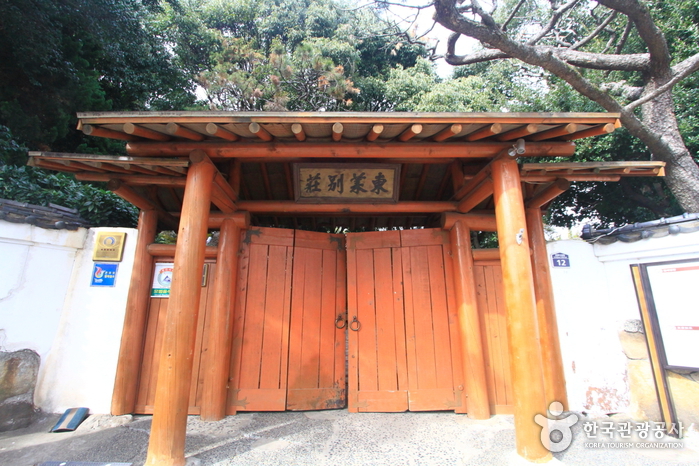
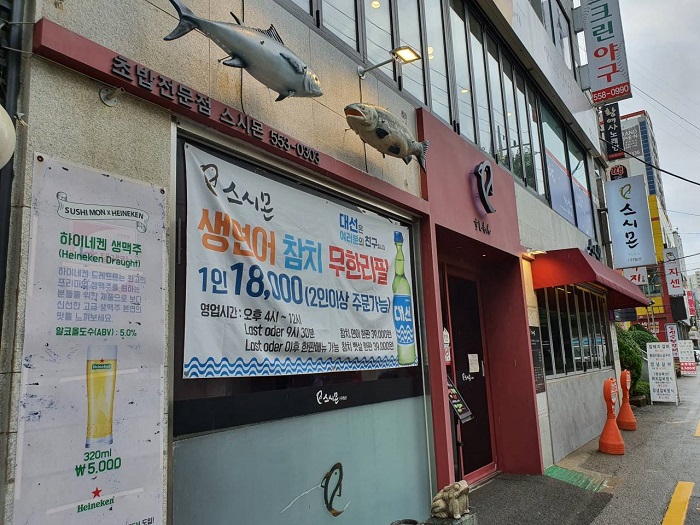
![Nokcheon Hotel [Korea Quality] / 녹천호텔 [한국관광 품질인증]](http://tong.visitkorea.or.kr/cms/resource/13/2636213_image2_1.jpg)
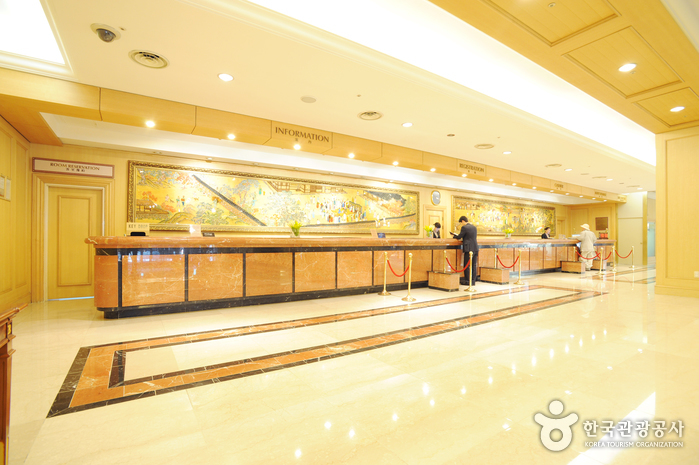
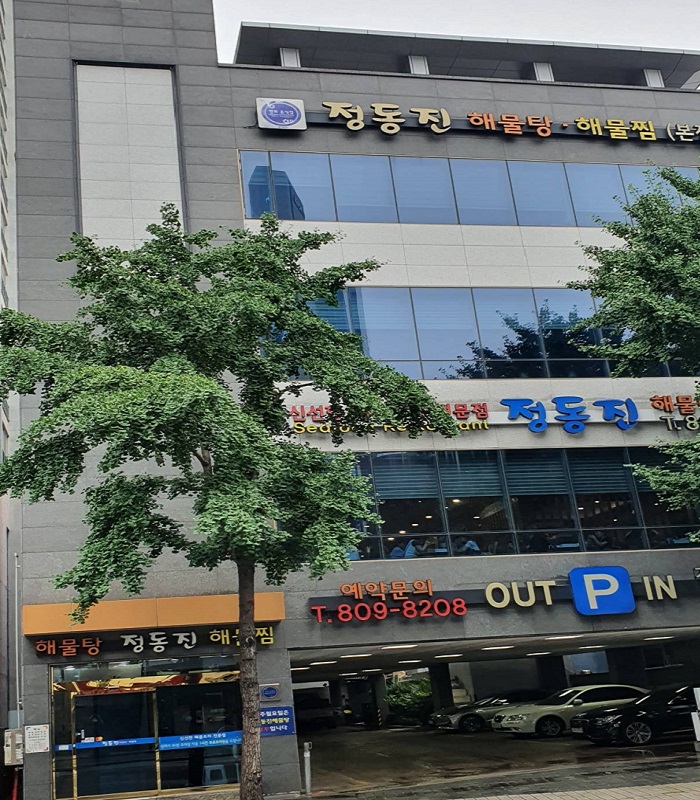

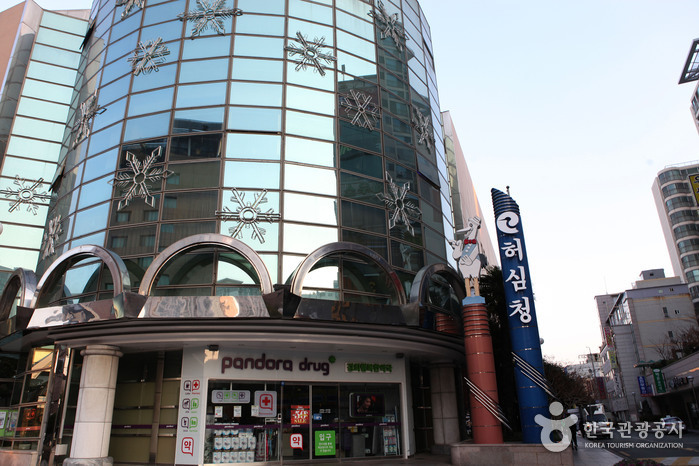
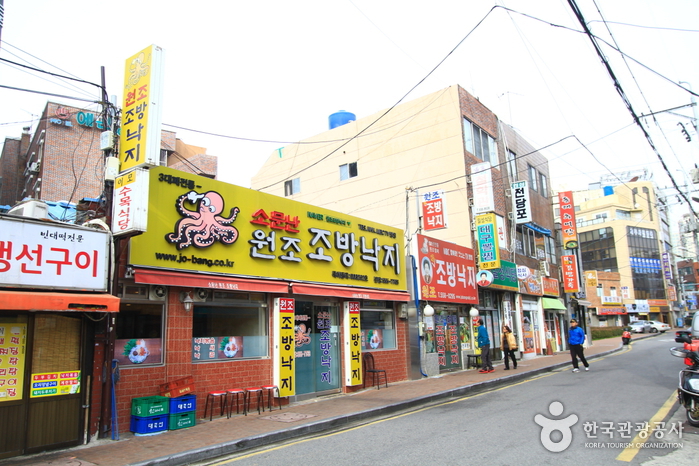
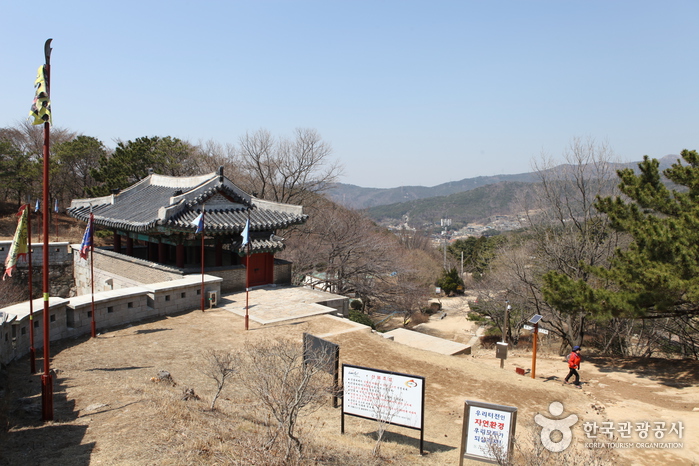
 Español
Español
 한국어
한국어 English
English 日本語
日本語 中文(简体)
中文(简体) Deutsch
Deutsch Français
Français Русский
Русский